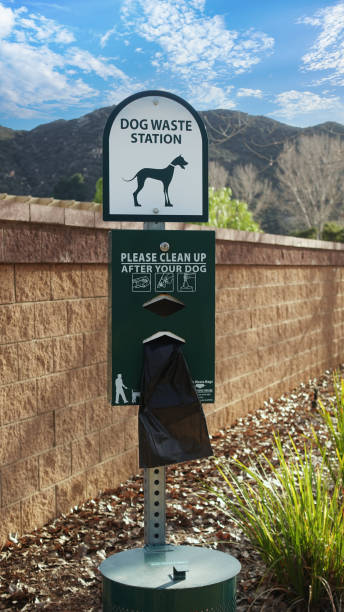Pet Insurance: Lifesaver or Waste for US Pet Owners

Cute white puppy leaning over pet insurance form and joyfully handling the paperwork, representing the responsibility of pet ownership and planning for your dog's health care and medical needs.
Background of Pet Insurance
The modern pet-care economy (tests, imaging, specialty surgery, long-term meds) means a single emergency or chronic condition can cost thousands of dollars. The pet insurance market in North America is growing quickly as owners look for ways to protect themselves financially and keep pets healthy without making impossible choices. According to industry tracking, there were roughly 7.03 million pets insured in North America at the end of 2024, reflecting a fast-growing market. Average monthly premiums in 2024 were roughly $62.44 for dogs and $32.21 for cats.
Below I walk through whether pet insurance is worth it for dog and cat owners in the U.S., explain types of coverage, costs and trade-offs, give decision checks and concrete scenarios, and list authoritative sources so you can dig deeper.

What pet insurance is (and isn’t)
Pet insurance typically functions like a simplified form of human health insurance:
- You pay a monthly premium.
- There’s usually a waiting period after enrollment.
- You pay a deductible (annual or per-condition).
- The insurer reimburses a percentage of eligible veterinary bills (e.g., 70–90%) up to any policy limits.
- Many plans exclude preexisting conditions and elective procedures; wellness/preventive care is often optional or offered as a rider.
Types of plans
- Accident-only: Covers injuries (broken bones, lacerations). Lowest cost.
- Accident + Illness: Covers accidents and illnesses (infections, cancers, chronic disease). Most common.
- Wellness/preventive add-ons: Covers shots, dental cleanings, routine exams — usually extra.
How much does it cost?
Costs depend on pet species (dog vs cat), breed, age, location, deductible, reimbursement %, and annual limits. Representative figures (industry averages, 2024 data):
- Average monthly: ~$62.44 for dogs, $32.21 for cats (NAPHIA / industry data). Individual quotes vary widely.
- Common coverage choices: Deductibles commonly $250–$1,000; reimbursement 70–90%; no per-condition caps on many popular plans (some have annual caps or lifetime caps depending on the insurer).
Bottom line: If you pay $40–$70/month for a dog plan, that’s $480–$840/year. If your dog later needs $5,000 in surgery and you have a $500 deductible + 80% reimbursement, you’d pay $500 + 20% × ($5,000 − $500) = $1,400 out-of-pocket, insurer would reimburse $3,100. That’s a meaningful offset for large bills.

Pros (why it can be worth it)
Protects against catastrophic bills. Pet insurance shines when major unexpected bills occur — surgeries, cancer treatment, specialty care. A plan converts a potential $5k–$20k emergency into more manageable out-of-pocket expenses and predictable premiums.
Peace of mind and treatment choices. Insurance reduces the risk you’ll decline treatment due to cost. Many veterinarians and owners cite this as the top benefit.
Chronic conditions become affordable. Once an insurer covers an ongoing condition (non-preexisting), long-term medication and monitoring are partly reimbursed — helpful for conditions like diabetes, allergies, or orthopedic disease.
Growing industry and features. Many insurers now offer direct-to-vet payment options, unlimited lifetime coverage options, and optional wellness riders. Market competition has improved plan features.

Cons (why it might feel like a waste)
Premiums add up if your pet stays healthy. If your pet never has major medical needs, total premiums paid over years may exceed what you receive in claims. For low-risk pets, self-insuring (dedicated savings) can be cheaper.
Preexisting conditions are excluded. Any condition that occurred before coverage or during a waiting period is usually excluded permanently. That can make insurance less useful for older pets or those with early signs of disease.
Reimbursement model and out-of-pocket timing. Most insurers reimburse you after you pay the vet (except a few that pay vets directly). That requires you to front costs for emergencies. Trupanion and some others offer direct-pay options but they’re not universal.
Complex fine print and exclusions. Breed-specific exclusions, elective procedures, cosmetic, and some dental conditions may be excluded. You must compare actual policy language.
Who benefits most — decision checklist
Consider pet insurance if any of these apply:
- You’d struggle to pay $2,000–$5,000 out of pocket for emergency surgery.
- Your pet is a breed with known hereditary conditions (large-breed dogs — hip dysplasia; some purebreds — heart, dental, or skin issues).
- You want financial predictability and don’t want to rely on emergency credit.
- You prefer spreading risk (monthly predictable cost) vs. saving a volatile emergency fund.
You might skip pet insurance if:
- You have a strong emergency fund earmarked for pet care and comfortable self-insuring.
- Your pet is young, indoor-only, low-risk, and you’d rather invest the premium money.
- You dislike the reimbursement model and prefer paying only when needed.
How to compare plans — 8 practical steps
Get multiple quotes. Prices vary—shop at least 3–5 carriers.
Compare apples to apples: match deductible (annual vs per-condition), reimbursement %, and any caps (annual, per-condition, lifetime).
Check waiting periods and coverage start: accidents often have short waits; illnesses longer. Avoid policies that create coverage gaps for known risks.
Read exclusions: congenital, hereditary, routine dental, behavioral, breeding-related costs — see what’s excluded.
Ask about preexisting conditions and curable vs incurable definitions. Some insurers will exclude conditions until a pet is symptom-free a year — others treat persistently.
Examine reimbursement process: do they reimburse you or pay vets directly? How fast are claims processed? Trupanion advertises clinician-direct payments in many vet networks.
Factor customer service & claim satisfaction. Read independent reviews (BBB, Trustpilot, specialized pet-insurance review sites).
Consider riders: wellness riders for routine care may be cost-effective if you want preventive coverage.

Real-world scenarios (examples)
Scenario A — Young mixed-breed dog, owner can cover emergencies
- Low accident risk, owner has $4k emergency fund. Insurance likely not cost-effective; saving the premium may be better.
Scenario B — Middle-aged Labrador (hip dysplasia is a risk), owner with modest savings
- Breed-specific risks make insurance attractive. Paying $60–80/mo may offset the real risk of a $5k+ hip surgery later. Insurance is likely worth it.
Scenario C — Older cat with possible early kidney issues
- Preexisting or early symptoms often disqualify coverage. Insurance might be refused or condition excluded. In many cases, maintaining an emergency fund or discussing payment plans with the vet is necessary.
Common FAQs
Will insurance cover routine vaccines and spay/neuter?
Usually not — you’ll need a wellness rider or pay out-of-pocket. Check details.
Are there lifetime limits?
Some plans offer unlimited lifetime coverage, others have annual or per-condition caps. Unlimited plans often cost more.
Does pet insurance cover behavioral therapy?
Often not, unless specified. Behavioral issues are commonly excluded or limited. Read exclusions.
Conclusion
Pet insurance is not a one-size-fits-all product. It’s worth it for owners who want risk transfer for catastrophic events, have breeds predisposed to expensive conditions, or prefer the predictability of monthly premiums. It’s less attractive for owners who can reliably self-fund emergencies, or who adopt older pets with preexisting problems that insurers will exclude.
If you decide to buy: get multiple quotes, compare the same deductible/reimbursement settings, read exclusions carefully, and enroll while your pet is young and healthy. If you decide to self-insure: create a dedicated pet emergency fund and revisit the decision yearly as your pet ages or health risks change.






1 thought on “Pet Insurance: Lifesaver or Waste for US Pet Owners”